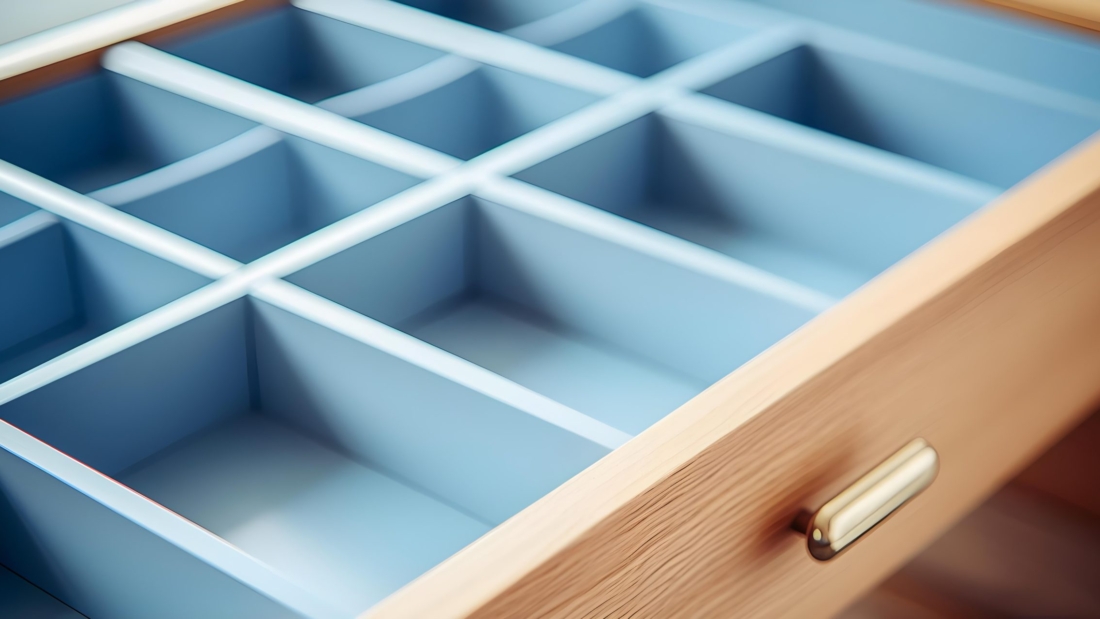What Is Melamine?
Let’s start with the basics.
Melamine is made by fusing decorative paper (which is often printed with a wood grain or color) onto a raw particle board substrate. Heat and pressure are applied during the manufacturing process to seal the surface and bind the layers together permanently.
The end result: a durable, decorative panel often used for kitchen cabinet doors and drawer fronts.
Why Choose Melamine for Kitchen Cabinets?
One of melamine’s greatest strengths is its ability to convincingly mimic a wide range of materials—especially wood.
From oak and walnut to beech and maple, melamine can recreate the appearance of almost any wood species. This makes it an excellent alternative to natural hardwoods, especially when you want the look without the price tag or maintenance.
Melamine cabinets are known for:
-
A realistic wood grain appearance
-
Consistent design across all panels
-
An extensive variety of textures and finishes
The Appeal of Consistency
While natural wood has unique charm, it also comes with natural variations—no two doors will ever look the same. Some homeowners love this organic character, but others prefer a more uniform appearance.
Textured melamine offers exactly that. Since it’s produced using printed patterns, it ensures a consistent and flawless wood grain effect across every panel in the kitchen.
This uniformity can help create a sleek, modern aesthetic or a perfectly balanced traditional look.
More Than Just Wood Grain
Although melamine gained popularity for imitating wood, it’s far from limited to that look. In fact, one of its biggest strengths is variety.
Melamine is available in:
-
Solid colors (like white, black, grey, blue, green, and more)
-
Matte, gloss, and textured finishes
-
Patterns that replicate stone, fabric, or brushed metal
Many designs also allow for texture and color matching, making it easier to create a cohesive kitchen space with coordinated surfaces.
Is Melamine a Type of Laminate?
Yes—melamine is a type of low-pressure laminate.
What this means in practice is that it’s more stable than solid wood or wood veneers. Natural wood expands and contracts with temperature and humidity changes, which can cause warping over time.
Melamine, on the other hand, does not warp. Its laminated surface is sealed and stable, making it ideal for humid or high-heat environments like kitchens.
Types and Grades of Melamine
There are different grades of melamine, which mainly concern manufacturing quality. Thicker paper layers, better resin bonding, and fused coatings are features of higher-grade melamine products.
The most common type used in kitchens is textured melamine, valued for its natural-looking grain and tactile surface.
As a homeowner, the most important factors are:
-
Surface finish (smooth or textured)
-
Color and pattern consistency
-
Durability of the product
Durability and Performance
Melamine is known for being:
-
Heat-resistant
-
Moisture-resistant
-
Stain-resistant
Because the surface paper is fused directly to the board, it doesn’t peel like other laminates. However, chipping can occur—especially on edges. If this happens and the inner core is exposed, it should be repaired quickly to avoid water damage.
Despite this, melamine holds up very well to daily wear and tear, making it an excellent choice for kitchens that see a lot of use.
Final Thoughts
Melamine cabinets offer an ideal mix of style, durability, and affordability. Whether you’re after a natural wood appearance or a bold solid color, melamine can deliver a high-end look without the complications of real wood.
With its resistance to warping, easy maintenance, and wide selection of finishes, melamine continues to be a go-to choice for both modern and classic kitchens.
If you’re considering a kitchen update, melamine doors are worth a serious look—they’re proof that practical can still be beautiful.

